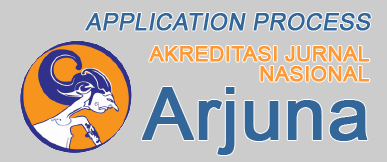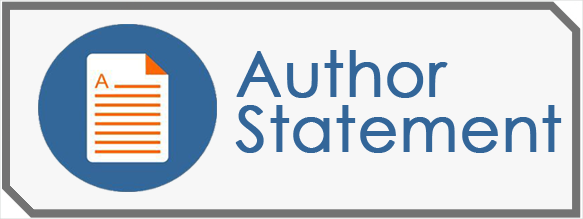Foundations of Bibliometric Writing: A Comprehensive Guide for Novice Researchers
DOI:
https://doi.org/10.62394/scientia.v2i2.79Keywords:
bibliometrics, performance analysis, citation analysis, co-citation analysis, bibliographic coupling, co-word analysis, co-authorship analysisAbstract
In the rapidly evolving landscape of academic research, bibliometrics has emerged as a crucial tool for scholars and researchers, offering a quantitative approach to analyze bibliographic data. This comprehensive guide focuses on empowering novice researchers with a profound understanding of bibliometric writing, covering fundamental concepts, including statistical literature, citation patterns, and publication trends. The guide also explores the use of bibliometrics to identify collaborations, understand metrics like the h-index and impact factor, and enhance research visibility. Practical examples and case studies are provided to facilitate hands-on learning. The first part introduces basic concepts, while subsequent sections delve into publication trends, collaboration identification, and various bibliometric metrics. The guide concludes by emphasizing the transformative potential of bibliometrics, allowing researchers to surpass traditional boundaries, make informed decisions, and contribute meaningfully to their academic fields.
Downloads
References
Andrés, A. (2009). Measuring academic research: How to undertake a bibliometric study. Elsevier.
Baker, H. K., Kumar, S., & Pandey, N. (2021). Thirty years of Small Business Economics: A bibliometric overview. Small Business Economics, 56, 487–517.
Ball, R. (2017). An introduction to bibliometrics: New development and trends. Chandos Publishing.
Choudhri, A. F., Siddiqui, A., Khan, N. R., & Cohen, H. L. (2015). Understanding bibliometric parameters and analysis. Radiographics, 35(3), 736–746.
Cobo, M. J., López‐Herrera, A. G., Herrera‐Viedma, E., & Herrera, F. (2011). Science mapping software tools: Review, analysis, and cooperative study among tools. Journal of the American Society for Information Science and Technology, 62(7), 1382–1402.
De Bellis, N. (2009). Bibliometrics and citation analysis: from the science citation index to cybermetrics. scarecrow press.
Dinić, B. M., & Jevremov, T. (2021). Trends in research related to the Dark Triad: A bibliometric analysis. Current Psychology, 40(7), 3206–3215. https://doi.org/10.1007/s12144-019-00250-9
Ellegaard, O. (2018). The application of bibliometric analysis: disciplinary and user aspects. Scientometrics, 116(1), 181–202.
Ellegaard, O., & Wallin, J. A. (2015). The bibliometric analysis of scholarly production: How great is the impact? Scientometrics, 105, 1809–1831.
Fuad, M., Suyanto, E., & Muhammad, U. A. (2022). A Bibliometric Analysis of Technology-Based Foreign Language Learning during the COVID-19 Pandemic: Direction for Indonesia Language Learning. International Journal of Information and Education Technology, 12(10), 983–995. https://doi.org/10.18178/ijiet.2022.12.10.1710
Garfield, E. (1955). Citation indexes for science: A new dimension in documentation through association of ideas. Science, 122(3159), 108–111.
Garfield, E. (1964). “ Science Citation Index”—A New Dimension in Indexing: This unique approach underlies versatile bibliographic systems for communicating and evaluating information. Science, 144(3619), 649–654.
Hicks, D., & Melkers, J. (2013). Bibliometrics as a tool for research evaluation. Handbook on the Theory and Practice of Program Evaluation, 323–349.
Hirsch, J. E. (2005). An index to quantify an individual’s scientific research output. Proceedings of the National Academy of Sciences, 102(46), 16569–16572.
Jia, C., & Mustafa, H. (2023). A Bibliometric Analysis and Review of Nudge Research Using VOSviewer. In Behavioral Sciences (Vol. 13, Issue 1). https://doi.org/10.3390/bs13010019
Moral-Muñoz, J. A., Herrera-Viedma, E., Santisteban-Espejo, A., & Cobo, M. J. (2020). Software tools for conducting bibliometric analysis in science: An up-to-date review. Profesional de La Información, 29(1).
Ramos‐Rodríguez, A., & Ruíz‐Navarro, J. (2004). Changes in the intellectual structure of strategic management research: A bibliometric study of the Strategic Management Journal, 1980–2000. Strategic Management Journal, 25(10), 981–1004.
Sangadji, S. S., Hakim, H., & Rachman, S. (2023). Mapping the landscape of research on workplace sexual discrimination: A bibliometric analysis. Gender Equality: International Journal of Child and Gender Studies, 9(2), 153. https://doi.org/10.22373/equality.v9i2.18441
Simabur, L. A., Sangadji, S. S., Rahman, A., & Koja, N. A. A. (2023). Exploring the Research Landscape of Marketing Communication in Tourism: A Bibliometric Analysis. Studies in Media and Communication, 11(7), 283. https://doi.org/10.11114/smc.v11i7.6294
Trinidad, M., Ruiz, M., & Calderon, A. (2021). A bibliometric analysis of gamification research. IEEE Access, 9, 46505–46544.
Vlase, I., & Lähdesmäki, T. (2023). A bibliometric analysis of cultural heritage research in the humanities: The Web of Science as a tool of knowledge management. Humanities and Social Sciences Communications, 10(1), 84. https://doi.org/10.1057/s41599-023-01582-5




















